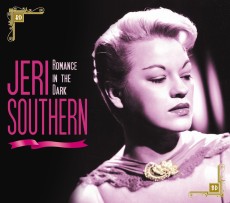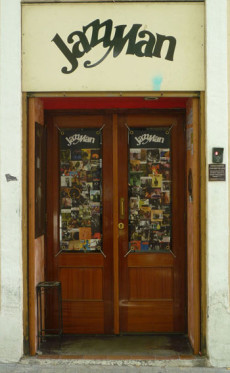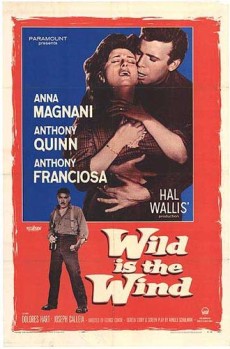
Daily Dose Of Jazz…
Jeri Southern was born Genevieve Hering on August 5, 1926 in Royal, Nebraska and began playing piano at age three. At age six she started formal study in classical piano and studying classical piano and voice at Sacred Heart in Omaha, Nebraska. It was during this period that her interest in jazz developed.
Southern began her career at the Blackstone Hotel in Omaha, then joined a United States Navy recruiting tour during WWII. In the late 1940s, she worked the Chicago club scene, once playing piano for Anita O’Day and where she became known for torch songs.
Signing with Decca Records in 1951, Jeri became known both for jazz and pop, rising to the height of her career during the decade. In 1955 her recording of “An Occasional Man”, reached #89 in the Billboard pop chart and in 1957 she had a Top 30 hit with “Fire Down Below”, that also hit #22 on the UK Singles Chart.
After her switch to Capitol Records, Southern found more success performing interpretations of Cole Porter with Billy May arrangements of some of the more humorous examples. She also sang in a few films
By the 1960s Jeri gave up the performing side of the music industry opting to teach instead, leaving a catalogue of more than two-dozen recordings. She would later move to Hollywood, California and work on film composing with Hugo Friedhofer. She wrote Interpreting Popular Music At The Keyboard during her final years.
Pianist and vocalist Jeri Southern passed away in Los Angeles, California of pneumonia on August 4,1991, at the age of 64.

Daily Dose Of Jazz…
Bill Coleman was born William Johnson Coleman on August 4, 1904 in Paris, Kentucky. In 1909 his family moved from Kentucky to Cincinnati and his first musical explorations were on clarinet and C melody saxophone, but he eventually settled on trumpet. He studied with Cincinnati trumpeter Theodore Carpenter and played in an amateur band led by trombonist J.C. Higginbotham. He began professional work in Cincinnati with bands led by Clarence Paige, Wesley Helvey and then Lloyd and Cecil Scott.
In 1927 he traveled to New York City and played with the Scott brothers to New York City, and continued to work with them until 1929, when he joined the orchestra of pianist Luis Russell. His first recording session was with Russell and he soloed on the tune “Feelin’ the Spirit”. Over the next couple of years he floated between Russell and Scott participating in recording sessions with each of them. By 1933 Bill was on his first European tour with Lucky Millinder, then in October returned to New York, worked with the bands of Benny Carter and Teddy Hill and sat in on a recording session with Fats Waller and laying down a number of memorable sides.
Coleman returned to Europe, played a residency in Paris with entertainer and vocalist Freddy Taylor, recorded with guitarist Django Reinhardt and made several freelance sessions under his own name. In late 1936 he traveled to Bombay, India playing with Leon Abbey’s Orchestra, then back to Paris to join saxophonist William T. Lewis. Returning to the States found him playing with Benny Carter, Teddy Wilson, Andy Kirk, Ellis Larkins, Mary Lou Williams, Sy Oliver, John Kirby, Lester Young, Billie Holiday and Coleman Hawkins.
Due to racial segregation Bill Coleman returned to France in 1948 and lived out his days there touring and performing in clubs and concert halls all over Europe. In 1974 he received the Ordre National du Merite and in 1978, he performed at the first Jazz in Marciac festival (along with tenor saxophonist Guy Lafitte, later becoming an honorary president of the festival organization.
Jazz trumpeter Bill Coleman passed away in Toulouse, France on August 24, 1981. His sound and phrasing were immediately recognizable with a style of the swing era musicians.
More Posts: trumpet

The Jazz Voyager
JazzMan: Roger de Flor, 238, Barcelona, Spain / Telephone: 667618593 / Contact: David Toribio.
The Jazzman is a cozy little jazz club located at the Eixample of Barcelona since 1979. You will feel calm when you listen to jazz in all its styles, enjoying a friendly cosmopolitan atmosphere of Barcelona nights with veteran artists or new talent. The musicians play in the attic, where the table nearest to the scene invades the space of the musicians, so be wary not to let the musician knock over your drinks. The club has two rooms that are quiet and you can talk without being attacked by a aggressive decibels. It is also a place where you can enjoy a great variety of spirits, cava or even coffee in the afternoons. The warmth and closeness give reason enough to visit the Jazzman. Close your eyes and prepare to enjoy a moment of possibility at the oldest club in Barcelona.
Sponsored By

Daily Dose Of Jazz…
Jack Wilson was born in Chicago, Illinois on August 3, 1936 but grew up in Fort Wayne, Indiana from the age of seven. From 1949-54, he studied piano with Carl Atkinson at the Fort Wayne College of Music where he was introduced to the music of George Shearing.
Wilson later picked up the tenor saxophone and played in the Central High School band. He began performing locally leading small combos. By his fifteenth birthday, he had become the youngest member ever to join the Fort Wayne Musicians Union, Local 58. At 17, James Moody hired him to play a two-week stint as a substitute pianist.
After graduating from Central High, Jack spent a year-and-a-half at Indiana University, where he met Freddie Hubbard and Slide Hampton. Then touring with a rock ‘n roll band, he wound up in Columbus, Ohio and connecting with then unknown Nancy Wilson and Rahsaan Roland Kirk.
After a year in Columbus, he moved to Atlantic City and led the house band at the Cotton Club, adding organ to his musical arsenal. At the Club he met Dinah Washington and worked with her from 1957-58.
A return to Chicago, Wilson was playing with Gene Ammons, Sonny Stitt, Eddie Harris and Al Hibbler and holding down the gig at the Persian Lounge. Drafted into the Army, he went to Fort Stewart, GA. and became the first Black music director for the Third Army Area, playing tenor saxophone in the army band.
In 1961, jack received an honorable medical discharge due to diabetes, returned to Dinah Washington’s band for a year and encouraged by Buddy Collette moved to Los Angeles, California. It was here he worked with Gerald Wilson, Lou Donaldson, Herbie Mann, Johnny Griffin, Sammy Davis Jr., Sarah Vaughan, Lou Rawls, Eartha Kitt, Julie London, as well as Sonny & Cher. He composed and recorded the title track for Earl Anderza’s debut album Outa Sight!
Wilson recorded his debut as a leader for Atlantic Records with The Jack Wilson Quartet featuring Roy Ayers followed by a sophomore project, then three for the label’s subsidiary Vault Records and three albums for Blue Note including the classic Easterly Winds in 1967. From there he focused on work with vocalist Esther Phillips, went back to the studio for Discovery Records, and returned to be a sideman with Lorez Alexandria, Tutti Camarata and Eddie Harris.
His final recording session simply titled In New York, took place on June 4, 1993 and featured legendary drummer Jimmy Cobb. Composer and pianist Jack Wilson died on October 5, 2007 due to complications from his life with diabetes.

Hollywood On 52nd Street
Wild Is The Windis a song written by Dimitri Tiomkin and Ned Washington for the 1957 film of the same name. The title song was was one of the five nominated songs at the 1958 Academy Awards and was originally performed by Johnny Mathis who also sang it at the Oscars. The movie starred Anna Magnani, Anthony Quinn and Tony Franciosa. The film was a remake of the 1947 Italian film Fury and was adapted from the a novel by Vittorio Nino.
The Story: Wild Is the Wind is about a rancher who marries his Italian sister-in-law after the death of his wife, but she falls in love with his young ranch hand.
Sponsored By
www.whatissuitetabu.com
More Posts: vocal




